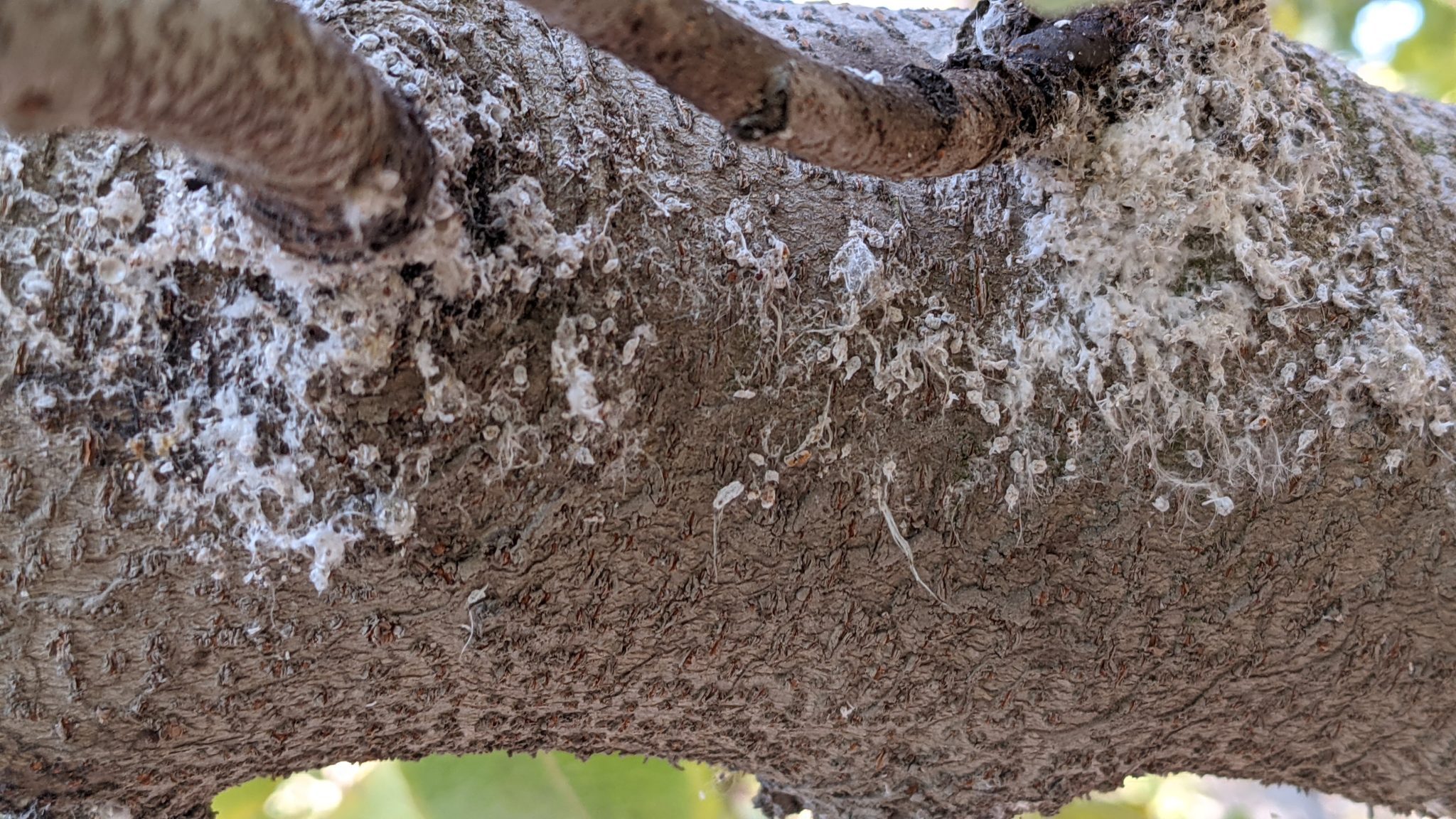
Gill’s mealybug, a significant but sporadic pest in pistachio production, has plenty of potential enemies, and effective control of this pest has become very tricky in recent years.
Gill’s mealybugs (GMB), Ferrisi gilli Gullan, are phloem feeders that suck out plant sap and excrete fluids and nutrients as honeydew. Large numbers of GMB feeding on the tree reduces nut yields. After this pest was first found in pistachio orchards in 1997, research showed that timed application of an insect growth regulator or a neonicotinoid targeting crawlers provided adequate control.
Researchers Nathan Mercer and Judith Stahl at UC Berkeley are going into the second year of a two-year California Pistachio Research Board-funded study on seasonal biology and controls for GMB in pistachio to determine why insecticide efficacy has been reduced. Stahl said there are three potential factors contributing to loss of effective GMB control.
Timing insecticide applications is difficult, Mercer said, because the first crawler peak is occurring earlier in the season, so many growers or PCAs may miss optimal pesticide application timing. Scouting for signs of crawlers in early May can help determine if a GMB infestation is present in an orchard.
Mercer advised growers to keep an eye out for GMB throughout their orchard and to monitor especially in and around areas that had signs of GMB infestation the previous fall and to monitor those same areas at budbreak, looking for signs of crawler feeding on the new tissue growth on branch tips. Later in the season, larger nymphs and mature females produce a network of white filaments that protrude from the back of the insect. This pest is easily transported between orchards on equipment.
In their research, Stahl and Mercer said they found three distinctive peaks of crawlers, much like earlier studies, but also found larger nymphs and adults during the latter two crawler peaks. Insecticide applications targeting the crawlers are ineffective against the other growth stages.
Natural enemies of GMB, including parasitoids, were helpful in keeping GMB control in almonds and vineyards, but Mercer noted in their research that no parasitoids were found when scouting pistachio orchards. Lacewings were the most common natural enemy of GMB. Nearly 7,000 individuals have been identified as potential predators for GMB, Mercer said. Initial results of the study suggest that insecticide applications were not lowering natural enemy populations in the sampled sites.
Finally, insecticide resistance is unlikely to be the reason for the lack of consistent GMB control as reduced efficacy has been noted in both the insect growth regulator and neonicitinoid materials. However, they are exploring that possibility this year.

Cecilia Parsons
Cecilia Parsons has lived in the Central Valley community of Ducor since 1976, covering agriculture for numerous agricultural publications over the years. She has found and nurtured many wonderful and helpful contacts in the ag community, including the UCCE advisors, allowing for news coverage that focuses on the basics of food production.
She is always on the search for new ag topics that can help growers and processors in the San Joaquin Valley improve their bottom line.
In her free time, Cecilia rides her horse, Holly in ranch versatility shows and raises registered Shetland sheep which she exhibits at county and state fairs during the summer.















